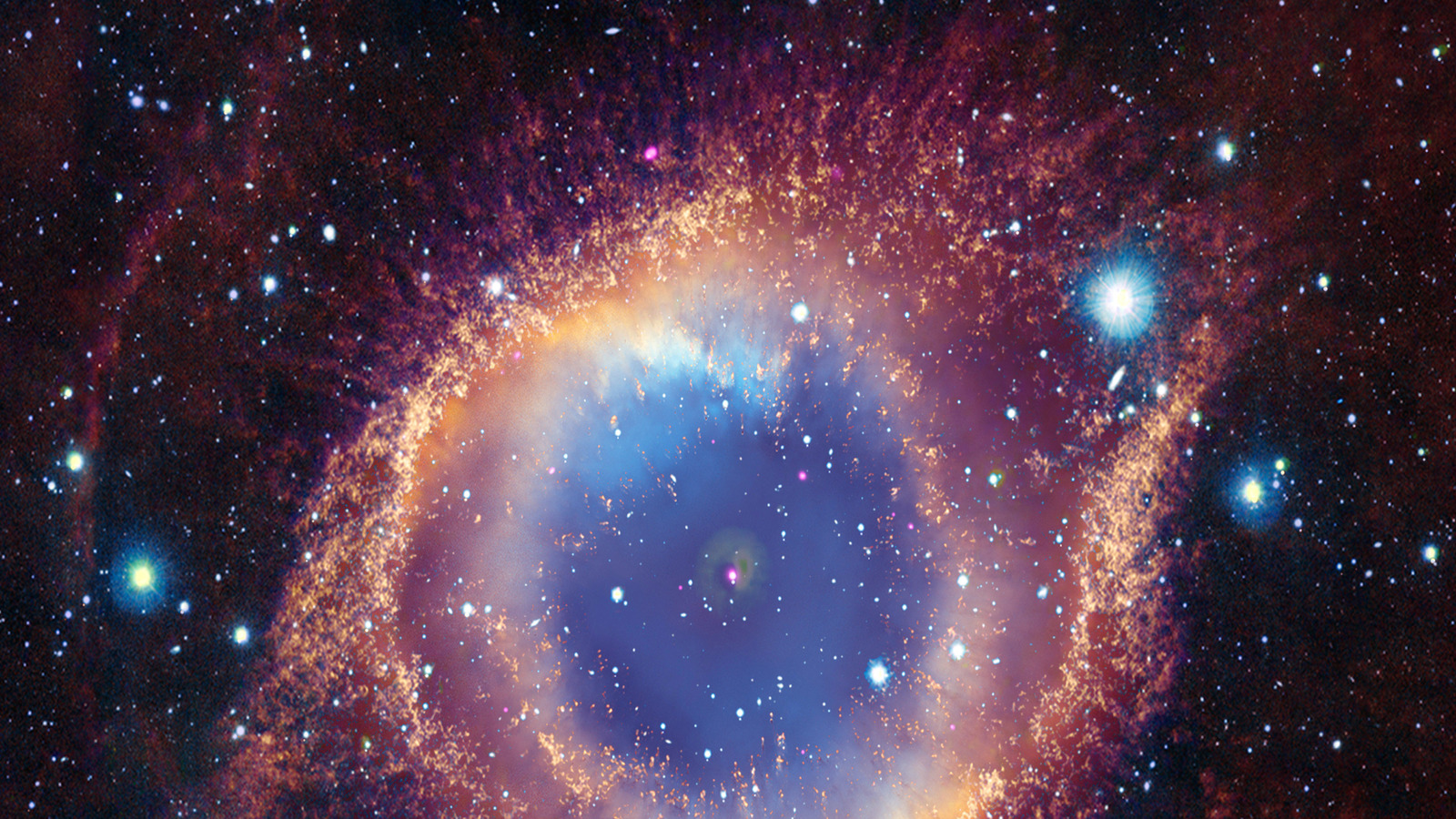
All great things have their conclusion, and this includes planets. Recent studies have revealed the tragic demise of an exoplanet within the nearby Helix Nebula, believed to have been consumed by a dying star.
Advertisement
X-ray signals have been emanating from the core of the Helix Nebula since the 1980s, yet the source was unknown until now. Utilizing data from NASA’s Chandra X-ray Observatory and the European Space Agency’s XMM-Newton telescopes, researchers have unveiled the unfortunate end of a planet in that region.
The Helix Nebula, referred to as a planetary nebula (a misleading term since it is not related to planet formation but stems from a historical misconception by 19th-century scientists), forms around the remnant core of a dying star. As the star sheds layers of material from its outer edges, gas and dust create a bubble structure that expands outward from the center.
At the nebula’s center exists the source of this mystery: a faint, remaining core of a star identified as a white dwarf.
Advertisement
The white dwarf, known as WD 2226-210 and situated just 650 light-years from Earth, emits the X-ray signals. New findings suggest these emissions may be remnants of a planet that once orbited the star.
A planet destroyed
Researchers theorize that a planet resembling Jupiter may have circled the star, gradually being drawn closer before being torn apart by the star’s immense gravitational pull.
“We believe the X-ray emissions could originate from planetary debris being pulled onto the white dwarf, sounding the death knell of a planet that was annihilated by the white dwarf in the Helix Nebula,” explained lead author of the study published in “The Monthly Notices of the Royal Astronomical Society,” Sandino Estrada-Dorado of the National Autonomous University of Mexico. “This might solve a mystery that has persisted for over 40 years.”
Advertisement
Another planet is known to exist in the same system—a Neptune-sized body orbiting extremely close to the star, with a year lasting under three Earth days. Thus, the existence of a former larger planet is plausible.
The hypothesis suggests that as the Jupiter-like planet was disintegrated, fragments were captured by the star’s gravity. These debris pieces heated up upon contact with the white dwarf’s surface, resulting in X-ray emissions.
“The X-ray signal we have detected may result from the debris of the shattered planet impacting the white dwarf’s surface and heating up,” noted co-author Martin Guerrero from The Institute of Astrophysics of Andalusia in Spain. “If validated, this would mark the first instance of a planet being observed as it is destroyed by the central star in a planetary nebula.”
Advertisement
Learning about planet death
This discovery is not only a grim detail but also a significant opportunity for scientists to comprehend how planets develop and ultimately meet their end.
While this represents the first discovery of its kind, the researchers believe there may be additional star systems akin to this one. They also explored the possibility that the object that was obliterated and fell onto the white dwarf could have been another star, although smaller stars like the size of a Jupiter-like body are denser and more massive, making them less likely to be ripped apart by gravitational forces.
Advertisement
“Finding more of these systems is crucial, as they can offer insights into the fate of planets around stars like the Sun as they near the end of their lifecycle,” emphasized co-author Jesús Toala from the National Autonomous University of Mexico.
There are two other known white dwarfs exhibiting similar X-ray patterns to WD 2226-210, though they are not situated within planetary nebulae. These two white dwarfs are also believed to be experiencing a rain of material from nearby planets undergoing destruction, potentially at a different rate than this one.
Since these three celestial objects emit intermittent X-ray signals, they are categorized as variable objects, leading researchers to propose that they may represent a new classification within this group.
Advertisement



